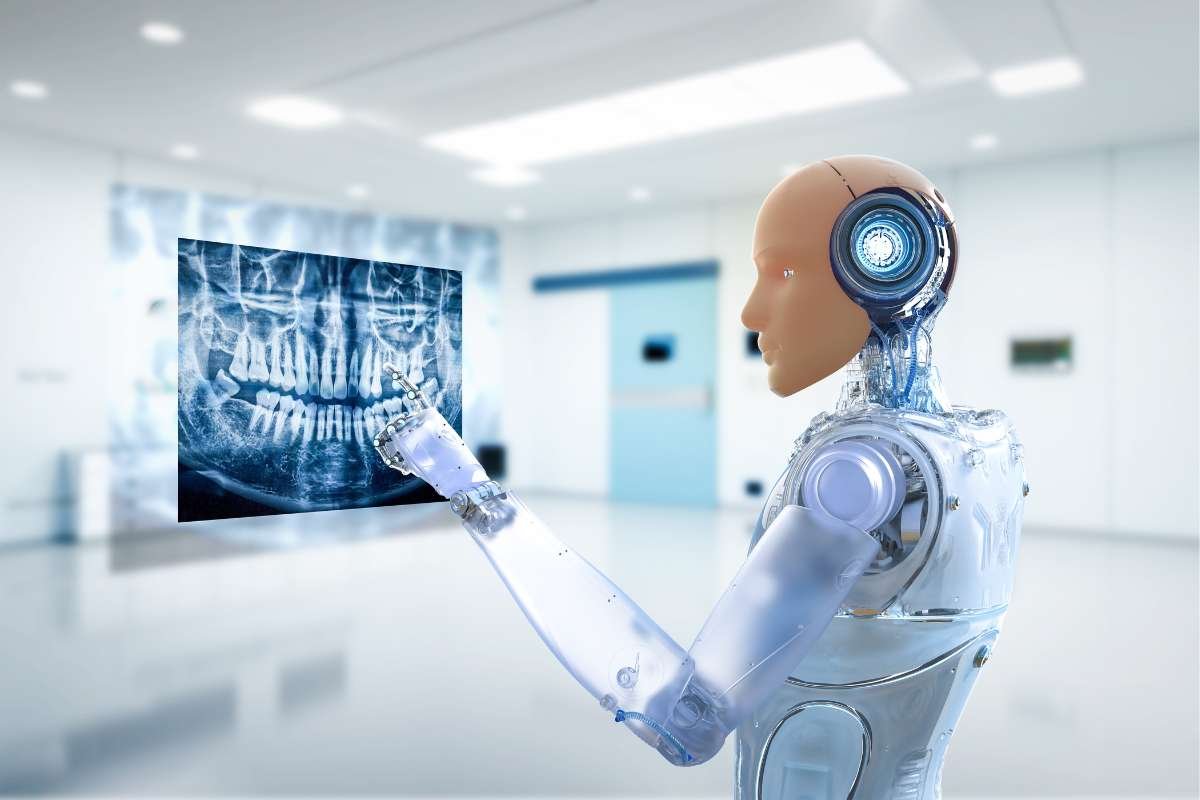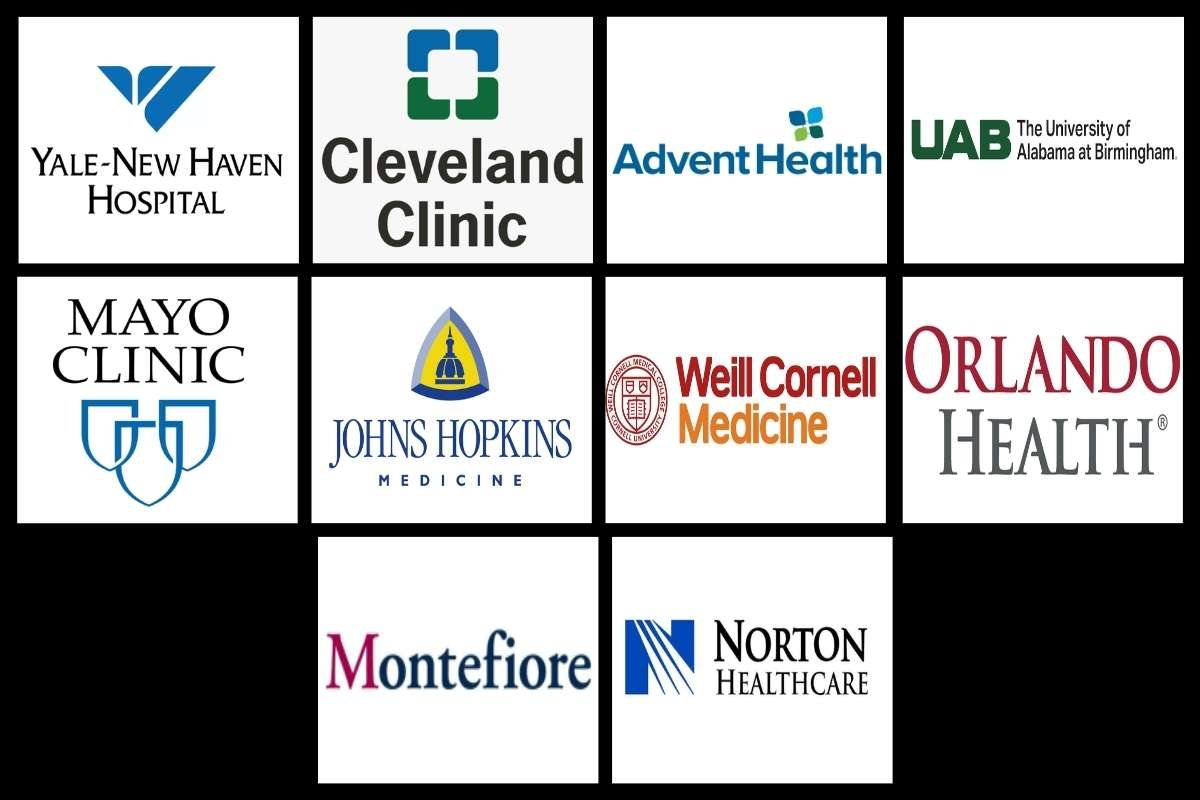What is the first thing that comes to your mind when you hear Dental AI Innovations?
Most people do not fondly associate AI and innovation with the dental healthcare space. However, things have started to change over the past few years. Dental AI innovations are revolutionizing the way dental professionals diagnose, treat, and manage oral health conditions. By enhancing accuracy, streamlining workflows, and providing personalized care, AI is poised to shape the future of dentistry. In this blog, we’ll explore 10 cutting-edge dental AI innovations that are transforming the dental industry and what they mean for patients and professionals in 2025.
1. AI-Powered Diagnostic Imaging
AI-powered diagnostic imaging is one of the most transformative dental AI innovations. Traditional X-rays require manual interpretation, which is time-consuming and may result in human error. AI systems, on the other hand, can automatically analyze dental images, identifying issues such as cavities, gum disease, infections, and fractures with a high degree of accuracy. These innovations can detect abnormalities at an early stage, enabling faster and more effective treatments.
AI systems can quickly assess vast amounts of imaging data, flagging potential concerns that might be overlooked in traditional reviews. This results in a more reliable and efficient diagnostic process, allowing dental professionals to intervene sooner and prevent more serious conditions from developing.
2. Predictive Analytics for Oral Health
One of the most exciting applications of dental AI is predictive analytics, which can help predict potential oral health issues before they arise. By analyzing a patient’s dental history, lifestyle choices, and other health data, AI systems can provide insights into the risk of conditions such as tooth decay, gum disease, or even oral cancer.
Using these predictive insights, dental professionals can recommend personalized preventive measures tailored to each patient’s needs, helping them avoid costly and painful dental treatments in the future. This level of proactive care is revolutionizing how patients manage their oral health, making dentistry more preventive than ever before.
3. AI-Powered Virtual Assistants
Another major dental AI innovation is the development of AI-powered virtual assistants. These tools are designed to handle various administrative tasks, such as scheduling appointments, answering patient inquiries, and providing reminders for dental checkups. By automating these tasks, virtual assistants allow dental professionals to focus more on patient care while improving office efficiency.
Additionally, AI-driven chatbots can provide patients with instant answers to common dental questions, offer oral health tips, and guide them through post-treatment care. This not only enhances the patient experience but also reduces the administrative burden on dental staff, improving overall workflow efficiency.
4. Robotic-Assisted Surgery
Robotic-assisted surgery is transforming the way dental procedures are performed, providing unparalleled precision and minimizing risks. In oral surgery, robots equipped with AI algorithms can guide dentists through procedures with high accuracy, ensuring that every movement is executed perfectly.
For complex dental surgeries, such as dental implant placements, AI can offer real-time guidance, using 3D imaging to map out the ideal placement of implants. This level of precision reduces the chances of complications, promotes faster recovery times, and improves the overall success of procedures.
5. AI-Enhanced Orthodontics
Orthodontics has also seen significant advancements thanks to dental AI innovations. AI-driven systems can analyze a patient’s oral structure, identify misalignments, and create customized treatment plans for braces or clear aligners. These AI tools help orthodontists design treatment plans that optimize tooth movement, improving the efficiency of the treatment process.
In addition to generating personalized treatment plans, AI can also track the progress of orthodontic treatments. By comparing real-time data with initial scans, AI can detect whether the teeth are moving as planned, allowing orthodontists to make adjustments if necessary. This results in more accurate treatment outcomes and a faster path to a beautiful smile.
6. AI for Teledentistry
The rise of teledentistry has been accelerated by AI, particularly in the realm of remote consultations and diagnostics. AI-powered platforms enable patients to receive professional advice without visiting the dental office in person. Patients can upload images or videos of their dental concerns, which AI systems then analyze to provide preliminary assessments.
Teledentistry is particularly beneficial for patients in remote or underserved areas, where access to dental professionals might be limited. It also offers a more convenient option for routine check-ups, follow-ups, and emergency consultations. AI in teledentistry not only makes dental care more accessible but also helps to manage patient loads in busy dental practices.
7. AI for Personalized Treatment Plans
AI is helping dental professionals create highly personalized treatment plans by analyzing a patient’s dental history, current oral health condition, and genetic factors. Traditional treatment plans are based on generalized data and clinical experience, but AI allows for a more individualized approach.
By incorporating AI into treatment planning, dental professionals can design interventions that are optimized for the patient’s unique needs. Whether it’s selecting the best material for fillings or designing a custom treatment path for periodontal disease, AI enables dentists to make decisions that are more precise and effective, leading to better long-term outcomes.
8. AI-Driven Oral Cancer Detection
Oral cancer is one of the most serious health conditions that can affect the mouth and throat. Early detection is critical for effective treatment, and AI is making significant strides in this area. AI algorithms can analyze images of oral tissues and identify signs of early-stage oral cancer or precancerous lesions.
These AI systems can detect subtle changes in tissue that may not be visible to the human eye, enabling earlier diagnosis and intervention. With faster detection, patients can begin treatment sooner, significantly improving the chances of successful recovery.
9. AI in Managing Dental Records
Dental AI innovations are also helping streamline the management of dental records. AI-powered systems can automatically organize, update, and retrieve patient records, making it easier for dental professionals to access critical information when needed.
These systems also improve the accuracy and consistency of record-keeping, reducing the risk of human error. For instance, AI can ensure that all necessary data, such as X-rays, medical histories, and treatment plans, are properly stored and linked together in the right place. This enhanced efficiency allows dental offices to provide more seamless care and better communication with patients.
10. AI-Enhanced Patient Monitoring
AI is enabling continuous monitoring of patients, particularly after dental procedures or surgeries. With AI-powered sensors, dental professionals can track the healing process in real-time and receive alerts if there are any signs of complications, such as infections or inflammation.
This level of monitoring allows for early intervention, ensuring that patients receive timely care and preventing the escalation of potential problems. AI-driven monitoring systems also enhance patient safety, providing both patients and dental professionals with peace of mind throughout the recovery process.
Conclusion: The Future of Dental AI Innovations
As we look ahead to 2025, dental AI innovations are set to revolutionize the way we approach oral healthcare. From smarter diagnostic tools and personalized treatment plans to robotic-assisted surgeries and AI-powered virtual assistants, these technologies are making dental care more efficient, accurate, and accessible. For dental professionals, this means enhanced precision and better patient outcomes. For patients, it translates into faster, more tailored care with improved results. The future of dentistry is bright, and AI is leading the way to a healthier, more convenient dental experience for all.







